Knowing why your business needs artificial intelligence (AI) is only half the battle. The real challenge is answering how:
How do you adopt AI without creating risk?
How do you ensure AI investments align with your business plan?
How do you prevent scattered pilots from becoming expensive dead ends?
The answer is strategy. AI success isn’t driven by technology alone but by implementing it within a deliberate framework that aligns with business goals. Without strategy, AI becomes a series of disconnected experiments. With strategy, it becomes a driver of profitability, scalability and competitive advantage.
Here are six key pillars of an effective AI strategy for mid-size companies.
1. Executive Alignment: AI Must Serve the Business
AI is a business initiative, not just an IT project. Efforts should start at the executive level to ensure projects scale and deliver meaningful impact. Too often AI pilots are launched by enthusiastic teams without senior sponsorship and never move beyond isolated wins.
Leaders should ask:
– How can AI improve customer experience?
– How can AI increase profitability and efficiency?
– How can AI support and empower our people?
When business goals drive AI, every initiative is measured by outcomes that matter—revenue growth, compliance, scalability and client satisfaction. Fractional CIO leadership can be particularly effective in tying AI adoption directly to executive strategy rather than departmental wish lists.
2. Data Readiness: Building the Foundation
AI is only as good as the data behind it. For many mid-size companies, data lives in ERP, CRM, spreadsheets, email and even paper records. If data is inconsistent, inaccessible or insecure, AI will produce unreliable insights.
Ensure data readiness by focusing on:
– Accessibility: Centralize and integrate data across systems and departments.
– Quality: Keep data clean, accurate and up to date.
– Security: Protect sensitive information with appropriate policies and controls.
3. Governance and Compliance: Guardrails for Safe Innovation
Adopting AI without guardrails is risky. Employees using free tools can expose sensitive data; vendors may introduce compliance gaps; regulators are increasing scrutiny around responsible AI. Governance sets clear policies for what data can be used, defines approval processes for new tools and establishes monitoring to ensure compliance with rules like HIPAA or GDPR.
Good governance doesn’t slow innovation—it enables it safely, so employees can use AI with confidence while protecting the company.
4. Cybersecurity: Make AI a Shield, Not a Vulnerability
AI both introduces new threats and strengthens defenses. Attackers use AI to craft more sophisticated phishing and automated attacks. Conversely, AI can detect anomalies, predict vulnerabilities and automate responses faster than human teams.
An effective strategy embeds cybersecurity from day one: use AI-driven monitoring to spot threats in real time, automate containment to reduce response time, and apply predictive analytics to stay ahead of adversaries.
5. Change Management and Culture: Bring People Along
Even great tools fail without adoption. Many employees fear AI will replace them or change their roles in negative ways. Leaders must address these concerns openly.
Center people in your strategy with:
– Education: Train employees on how AI augments their work, rather than replacing it.
– Communication: Explain the rationale behind AI initiatives and how they support business goals.
– Celebration: Highlight early wins to build momentum and trust.
6. Measurable Roadmap: Start Small, Scale Smart
A practical AI roadmap is measurable and scalable. Avoid biting off too much or getting stuck in endless pilots. Start with small projects that have clear ROI—automating repetitive workflows, for example—then measure outcomes with KPIs like time saved, error reduction or customer satisfaction.
Expand successful pilots across the organization so each step is a measurable success that builds toward transformational change.
Build an Effective IT Strategy with Cytranet
An effective AI strategy isn’t about buying the newest tools or chasing hype. It’s about connecting technology to outcomes, protecting your business and empowering your people. Without the six pillars above, AI risks becoming scattered, costly and risky. With them, AI becomes a sustained competitive advantage.
At Cytranet, we’ve seen that mid-size companies don’t need massive budgets or in-house data science teams to succeed with AI. What they need is executive-level IT leadership and a clear framework. Our Fractional CIOs help align AI adoption with business objectives, build the data, governance and security foundations, guide cultural change, and create a roadmap that delivers measurable ROI.
Request a consultation now and check out our next blog on real AI use cases for mid-size companies.


